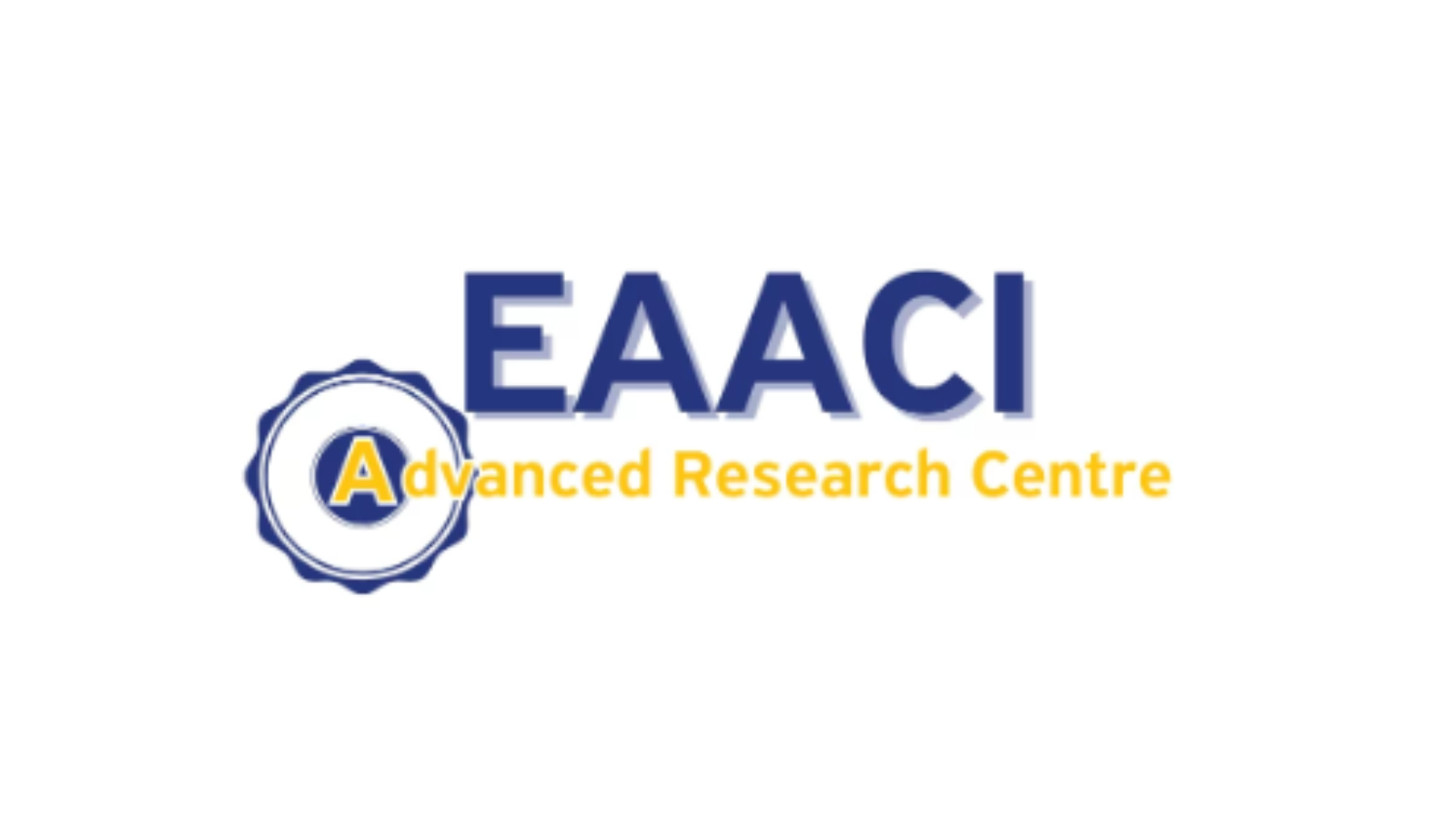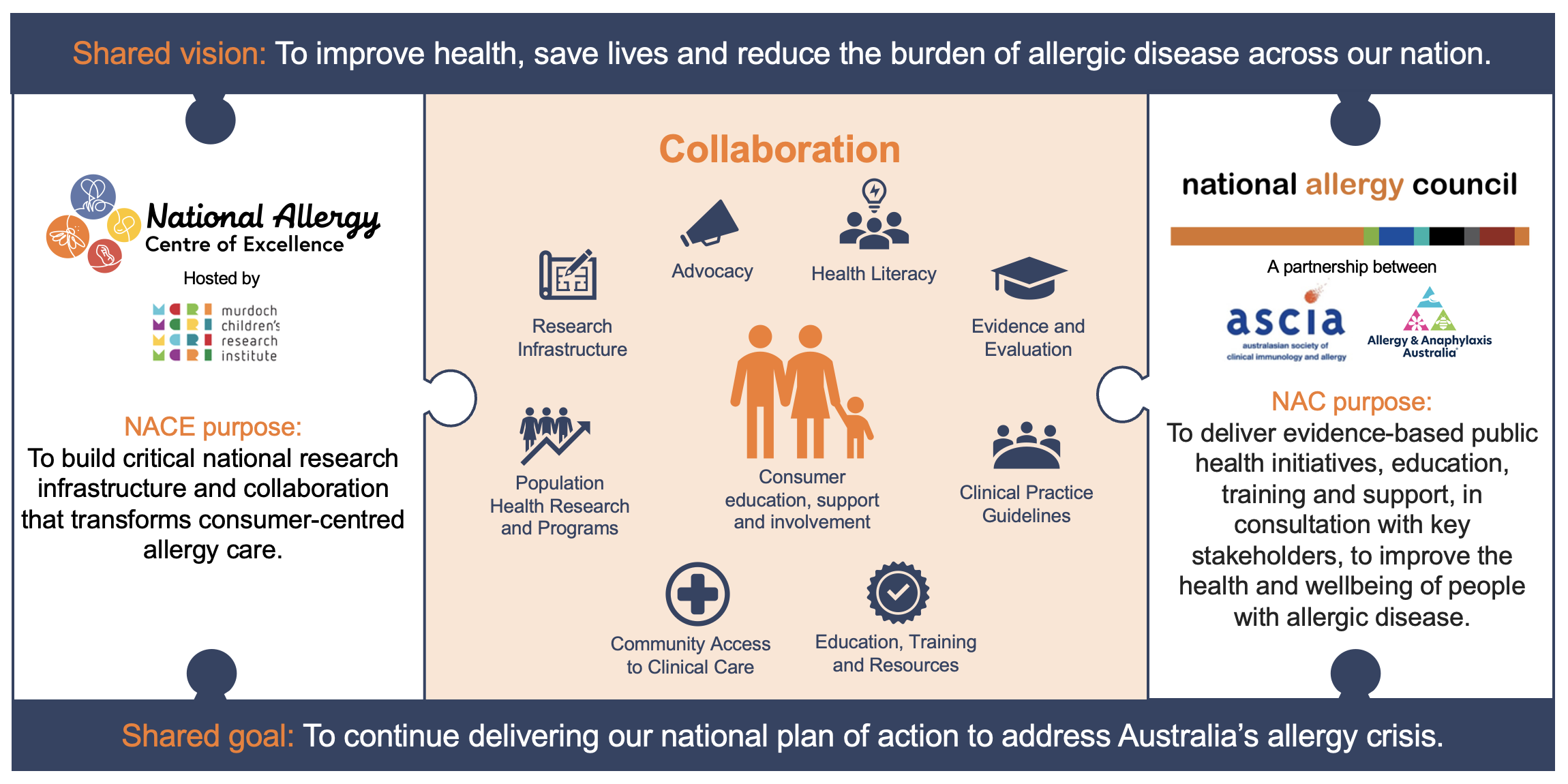About
Transforming evidence-based allergy care
The National Allergy Centre of Excellence (NACE), hosted at Murdoch Children’s Research Institute in the epicentre of Melbourne's biomedical precinct, is Australia’s peak allergy research body.
Since establishing in 2022, it has become one of the largest and most ambitious centres of its kind globally. Backed by an Australia-wide network of more than 460 experts in drug, food, insect, and respiratory allergies, the federal government-funded centre is working to address one of our fastest growing chronic conditions - allergic disease.
The NACE builds critical national research infrastructure and collaboration that transforms consumer-centred allergy care. Importantly, working alongside the National Allergy Council (NAC), the NACE ensures healthcare services, public health programs and clinical guidelines stay laser-focused on the latest evidence.
In June 2025, the NACE was recognised as a European Academy of Allergy and Clinical Immunology (EAACI) Advanced Research Centre. The prestigious, international recognition acknowledges our exemplary standards and dedication to improving quality of healthcare, allergy research and education.
Looking ahead, the NACE will scale its program across the four pillars – Transforming Allergy Care, BioRepository and Discovery, Evidence and Translation, and Training and Innovation.

The problem
More than five million Australians live with allergic disease, due to their immune systems reacting abnormally to common triggers that, for most people, are harmless. Symptoms can be mild, but can often escalate to severe breathing difficulties, collapse, or even death. In fact, each year, more than 2,400 people are hospitalised with acute allergic reactions (anaphylaxis), and 20 Australians lose their lives. Alarmingly, anaphylaxis deaths increased by seven per cent annually in Australia between 1997 and 2013 – mostly triggered by foods, insect stings, or medications.
The emotional toll of living with the risk of anaphylaxis – anxiety, isolation, and poor mental health – impacts both patients and their families. The burden of anaphylaxis is also borne by schools and early children’s education and care staff, camps, sporting clubs, workplaces and food service providers.
Australia has the highest rate of food allergies in young children globally with one in 10 babies impacted. Furthermore, one in four Australians report having a medication allergy. Allergic rhinitis (commonly known as hay fever) affects 24 per cent of the population – up from 15 per cent in 2008. Additionally, there are 12 deaths from bee or wasp stings each year.
Without action, allergy cases are predicted to rise by 70 per cent by 2050, affecting 7.7 million Australians. The financial cost is also soaring, projected to exceed $7.8 billion per year, recorded in 2007.
The Solution
People with allergic disease often have more than one allergic condition and many families have several members living with allergies. Adding to that burden, allergic disease is now more complex, requiring a coordinated, strategic approach to care and research that addresses prevention, diagnosis, long-term management, education and support.
This was recognised by the 2020 bipartisan Parliamentary Inquiry into Allergies and Anaphylaxis and subsequent Walking the allergy tightrope report, which made 24 recommendations to address the critical need for a national plan of action.
In August 2022, the Australian Government invested $26.9 million to establish the NACE and NAC. The world-leading collaboration has been instrumental in transforming the lives of millions of Australians impacted by allergic disease.
The NAC continues as a partnership between the peak medical body, the Australasian Society of Clinical Immunology and Allergy (ASCIA), and peak patient support organisation, Allergy & Anaphylaxis Australia (A&AA). While the NACE, hosted at Murdoch Children’s Research Institute in Melbourne, involves a national network of more than 460 researchers.
Together, we have transformed allergy research and care, launched new initiatives to tackle existing and emerging challenges, expedited allergy data and biospecimen collection, and rapidly translated evidence into real-world care to improve health and reduce the burden of allergic disease across our nation.










